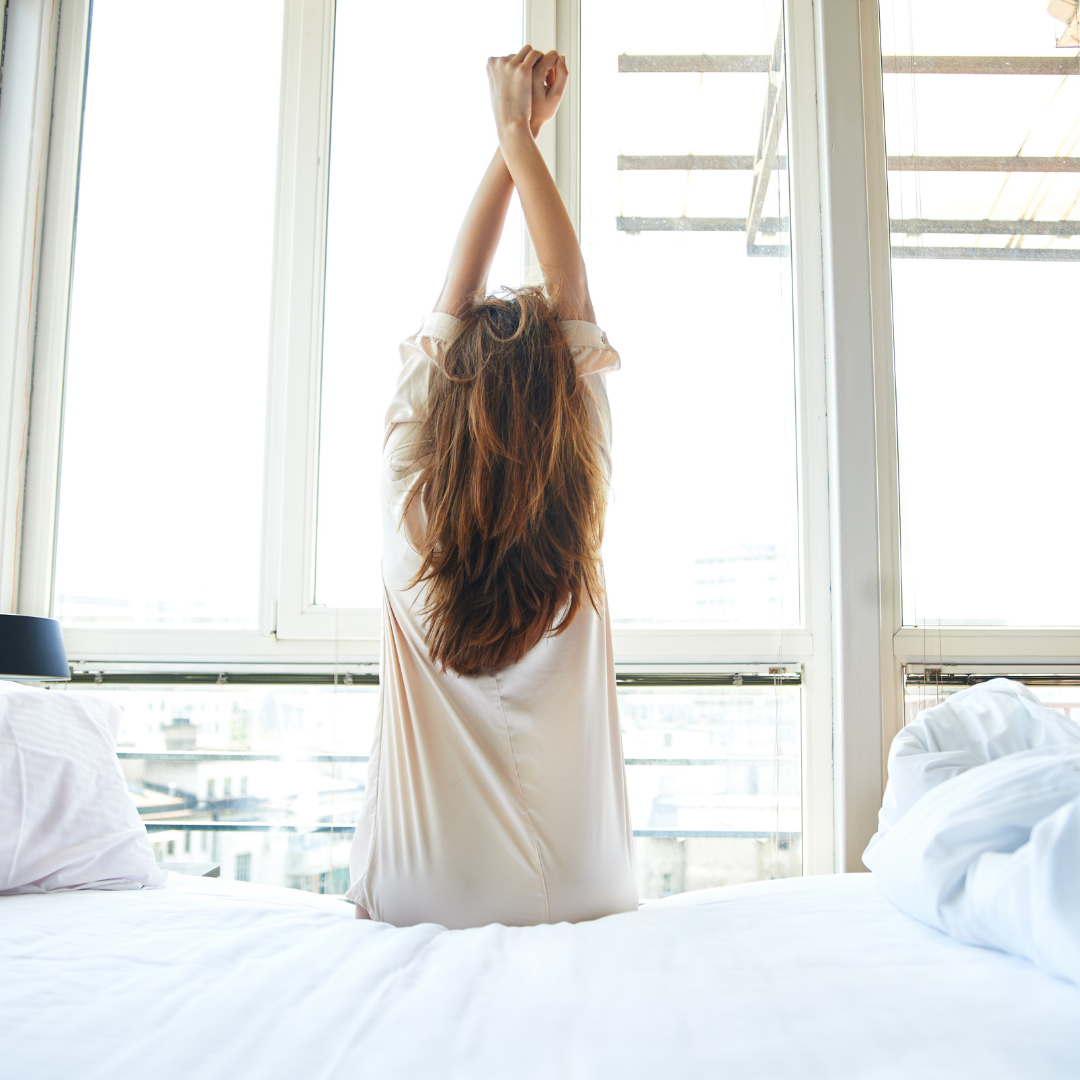
Stretching Exercises Before Going To Bed
Sleep should be a welcome break, but with our everyday routines disrupted and an almost daily barrage of anxiety-inducing activities, many people have trouble having a break and sleep. Also, doing it before bedtime helps to relax your muscles and prevents you from waking up in agony.
Furthermore, regular stretching helps to increase flexibility. It also helps with muscle recovery and sleeps quality by improving blood flow and relieving muscle tension. The more you can calm your body before bed, the better your sleep will be. The following are some of the stretching exercises you can do before going to bed.
Child’s Pose
The child’s pose is a relaxing stretch for the entire body, but it will be particularly beneficial to the knees, shoulders, and thighs. You can use this pose to calm the mind and body and help you look inward for peace. It is still there for you whenever stress takes over, whenever you need to reconnect with your breath, your purpose.
Execution:
- Sink your hips back to your heels and chest between your thighs as you begin in the tabletop. Your big toes are touching, and your knees are as wide as they need to be to allow you to breathe deeply.
- Stretch your arms by walking your hands out in front of you. You can rest your forehead on the ground or give yourself a mini massage by rolling a tennis ball or massage ball from side to side.
Bear Hugs
This stretching exercise targets the upper back’s rhomboids and trapezius muscles. Also, it helps relieves inflammation or pain in the shoulder blades caused by bad posture, bursitis, or frozen shoulder.
Execution:
Inhale as you stand tall and spread your arms wide. Exhale as you embrace yourself by crossing your arms and putting your right arm over your left and your left arm over your right. Breathe deeply as you pull your shoulders forward with your fingertips, hold this position for 30 seconds. Then take a deep breath and open your arms wide again. Exhale and do it again, this time with the left arm on top.
Legs-Up-The-Wall
Legs Up the Wall Pose (or Viparita Karani) is a vital yoga posture that relieves stress and tension by allowing the mind and body to relax. It’s one of the most accessible yoga poses to learn because it doesn’t require flexibility or strength. Even though it’s a passive pose, it has a lot of advantages. It is also a great relaxing position to do before bed or in the morning.
Execution:
- Begin by creating a comfortable space around a wall– my personal preference is simply lying in bed with my legs propped up against the headboard.
- Scoot your hips as close to the wall as possible, then begin walking your feet up the wall until your body forms an L shape. Make the appropriate adjustments to make your environment more comfortable.
- Concentrate on your breathing at this point; try elongating it by taking a deep, slow inhale through your nose and a deep, slow exhale through your nose. For best results, try to hold the pose for at least 5 minutes.
Cobra Pose
The Cobra Pose is well-known for its ability to improve spinal flexibility. It strengthens the back and shoulders while stretching the chest. It also aids in the opening of the lungs, which is beneficial for people with asthma. This pose also improves digestion by stimulating the abdominal organs.
Furthermore, it is an energizing backbend that helps to relieve tension and exhaustion. It also helps to alleviate sciatica discomfort by firming and toning the shoulders, belly, and buttocks.
Execution:
- Start by lying on your belly.
- Place your hands on the floor, palm facing the floor, make sure that your hand is in line with your shoulders. Keep your elbow close to your torso.
- Don’t forget to inhale while you lift your head on the floor. Hold the position for 15 to 30 seconds.
Sphinx Pose
Sphinx Pose is a subtle backbend that almost anyone can do. It strengthens the spine and firms the buttocks while lengthening the abdominal muscles. The chest, lungs, and shoulders are stretched and opened as well. It energizes the body, calms the nervous system, and helps to relieve exhaustion.
Execution:
- The first step in executing a sphinx pose is to lie down flat on the floor, as well as your toes and your forehead leaning on the ground. Make sure your legs are close together, with your feet and heels gently touching.
- Stretch your arms out in front of you, palms down, and arms are hitting the ground. Then lift your head, shoulders, and abdomen slowly while holding your navel on the floor. Take a deep breath while doing this.
- With the help of your arms, pull your body back and off the floor. Continue to breathe slowly and deliberately as you curve the spine vertebra by vertebra.
- Make sure your feet are close together, and your head is pointed straight ahead. When you exhale, gently lower your belly, shoulders, and head to the floor.
Side-Neck Stretch
When the head and shoulders sag down due to poor posture, some muscles in the chest and neck shorten and tighten over time, perpetuating the bad posture that causes neck pain. Side-neck exercise can help relax postural muscles and alleviate neck pain.
Execution:
- Gently bend your head to the right, dropping your right ear to your right shoulder, while sitting with your legs crossed. Reach your right hand down while simultaneously lowering your shoulder away from your ear. You can feel a stretch on the left side of your body. Take five deep breaths and hold them. Return the head to its original position and repeat on the other hand.
Seated Forward Fold
This pose stretches these muscles and aids in the hip opening. A seated forward fold is especially beneficial for runners who have tight hamstrings, and it’s often regarded as a relaxing pose. This pose is said to help alleviate tension and even boost one’s mood.
Execution:
- Extend your legs straight out in front of you when sitting. Inhale and lengthen the neck by reaching your arms up. Exhale and bend over, hunching at the waist and reaching for your toes with your arms. Keep for five breaths before letting go.
Takeaway
For one reason, stretching binds you to your body and lets you concentrate on your breath and body rather than the stresses of the day. This body knowledge aids in the development of mindfulness, which has been shown to aid in better sleep. Feel free to use those stretching exercises mentioned above.






